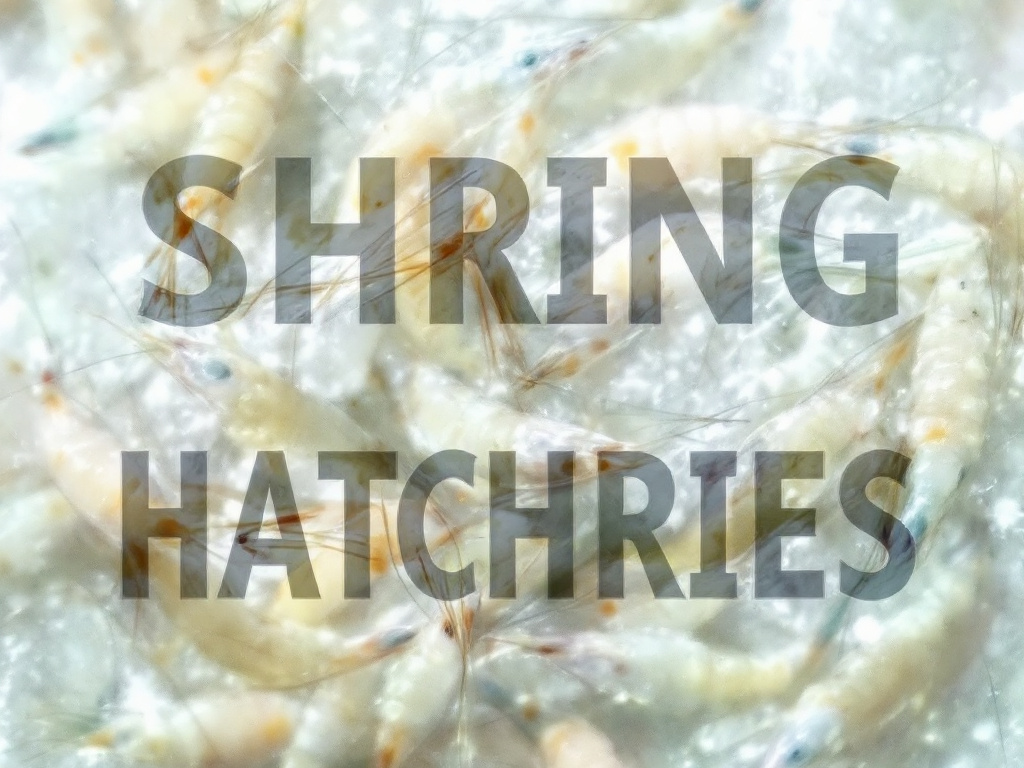Image generated by flux-ai.io & content generated by ChatGPT Version 4o-mini
Improving Fish Hatcheries: A New Method for Storing Brine Shrimp Eggs
Living in Gulf County, Florida, with its beautiful beaches and vibrant fishing communities, you might already know how essential fish are to our local economy and culture. But did you know that the success of fish hatcheries—the places where baby fish are bred—depends heavily on a tiny creature called the brine shrimp? Researchers have recently uncovered a new method for storing brine shrimp eggs that could greatly benefit local hatcheries and the fishing industry.
What Are Brine Shrimp?
Brine shrimp, also known as Artemia, are small crustaceans that serve as a vital food source for young fish. These little critters are usually harvested from lakes or salt flats and come in a dormant form called cysts. Hatcheries need to hatch these cysts into baby brine shrimp (known as nauplii) to feed to fish larvae, which are incredibly delicate and require specific nutrition to grow.
Traditionally, hatcheries decapsulate the cysts—removing their hard outer shell—before using them. This process can be labor-intensive and time-consuming, especially for hatcheries that need to feed fish daily. However, researchers have found an easier way to store decapsulated brine shrimp eggs, which could save time and money for local hatcheries.
The New Storage Method
The recent study found that decapsulated brine shrimp eggs can be stored in a special salty water solution, known as brine, for up to a week without significantly affecting their ability to hatch. This means that instead of decapsulating eggs every day, hatcheries can do it once a week and store the eggs in this brine solution.
For example, if a hatchery needs 5 grams of brine shrimp eggs per day, they can decapsulate 35 grams at once and store them in brine. This not only saves time but also ensures that fresh food is available for fish larvae every day.
Why Does This Matter to Gulf County?
For Gulf County, where fishing is a key part of the economy, this new method could have a significant impact. With many local businesses relying on healthy fish populations, improving hatchery efficiency is crucial. By adopting this new storage technique, hatcheries can produce more healthy fish in less time, potentially leading to better catches for local fishermen.
Moreover, as the community focuses on sustainable practices, using this method can help hatcheries operate more efficiently and with less waste. This is especially important given the growing concern about fish populations in our waters.
Local Applications and Future Implications
Farmers and fishermen in Gulf County can benefit from this research by supporting hatcheries that adopt these new practices. As we continue to face challenges such as climate change and overfishing, innovative methods like this one are essential for maintaining our marine ecosystems.
Additionally, local educational programs and community groups could explore the science behind fish breeding and the importance of brine shrimp in the ecosystem, making it a great opportunity for youth engagement and learning.
In summary, this new method of storing decapsulated brine shrimp eggs represents a step forward for fish hatcheries in Gulf County. By making fish breeding more efficient, we can help ensure a thriving fishing industry for generations to come.
References
Error generating citation: 410 Client Error: Gone for url: https://edis.ifas.ufl.edu/publication/FA203

